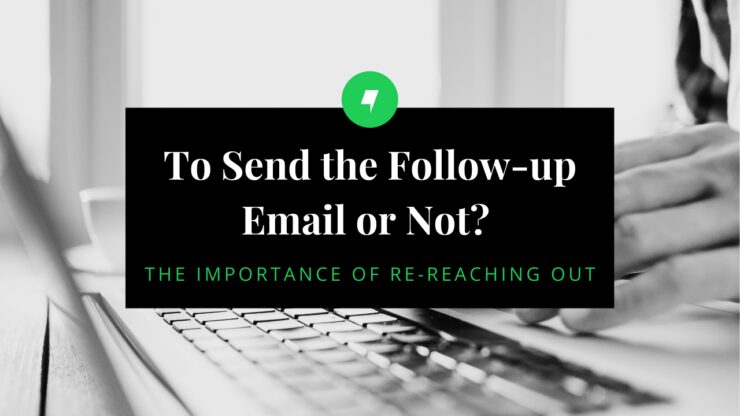We’ve all been there. You send a pitch to a reporter and nothing. No acknowledgement of receipt. No “thanks, but no thanks.” Silence. Should you follow up? In the world of media relations, the follow-up can sometimes make or break the pitch and impact the amount of media coverage you’re able to garner.
First, let’s assume you’ve done your research, and you know that your pitch is appropriate for the journalist you’ve reached out to. You know their beat, you’ve read their latest pieces, and you’ve done the work to craft a good story to tell. Once these boxes have been checked, and your pitch is sent, it’s time to prepare a follow-up message.
Read on below to learn more about the important role follow-up emails play in your media relations strategies and best practices for crafting effective follow-up messages.
Maintain Engagement
Journalists receive hundreds of pitches every day. Because of this, it’s probable your first email fell under their radar. A follow-up serves as a gentle reminder to reporters and acts as a touchpoint, in case they happened to overlook your initial message.
Demonstrate Persistence
Sending a follow-up email exemplifies your proactivity, in addition to your interest in sharing your client’s story, or garnering coverage for a recent announcement. Circling back to the previous point, a journalist may have missed or overlooked your initial message. By checking in a second time, you’re not only demonstrating your commitment to the opportunity, but also giving the reporter another chance to review your pitch.
Build on Your Initial Message
A follow-up email can act as an opportunity to build on your initial pitch. Instead of circling back with a brief “just checking in here” message, which could be better used for your second follow-up email, use your first follow-up message to build on your pitch. Adding relevant data, background information on your spokesperson or an interesting angle to your story can help grab the reporter’s attention and increase your chances of getting a response.
Be Timely
When executing a media relations strategy, whether pitching a grand opening or offering an exclusive deskside opportunity with a client thought leader, plan to send your follow-up emails in a reasonable timeframe. Don’t wait a week to follow-up on a timely client announcement – instead, set aside time to conduct follow-ups within 24 hours of your initial outreach.
Keep it Short & Sweet
Even if you plan to build on your initial pitch to reporters in your follow-up message, try to keep it short and sweet. Be sure to add the most relevant, punchy information to the beginning of your email to avoid burying it beneath less-relevant follow-up language.
Don’t forget about your email subject line, either! For your follow-up message, use a subject line that will capture the reporter’s attention and clearly indicate the purpose of your follow-up.
Be Strategic – Know When to Call, and When to Pause
As PR pros, we are dedicated to securing meaningful media coverage for our clients, wanting nothing more than the opportunity for them to tell their stories in outlets that reach their target audience and position them as leaders within their respective industries. In an ideal world, we never stop following up, motivated by the hope that someone will eventually pick up the amazing story our client wants to tell. With that being said, it is important to be strategic when conducting follow-up outreach. If emails aren’t working, give the reporter a call. Even if they don’t answer, leaving a brief voicemail with details on your story as well as your contact information can help spur a reply.
It’s important, too, to know when to pause on follow-up outreach. If you get radio silence after three emails and a call, it may be time to brainstorm a new angle for your pitch and find additional journalists that might be interested in your story. If that doesn’t work, and your story happens to be evergreen, don’t give up! Continue to monitor the news and revisit opportunities to pitch your client down the road. While us PR pros know the importance of our client’s work, it’s important to be creative and continually find new opportunities to showcase them.
In conclusion, follow-ups play an important role in your media relations strategy. They help to maintain engagement with reporters, demonstrate your persistence and the importance of your outreach, and allow you to get creative in how you position your clients.
Interested in learning more about strategic communications? Check out Veronica Mikitka Reed’s blog on “Creating A Strategic Communications Plan” and read about the latest ways AI is revolutionizing the PR industry, from Maven founder Jess Sharp.
Posted In Media Relations, Public Relations
